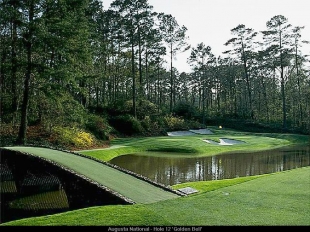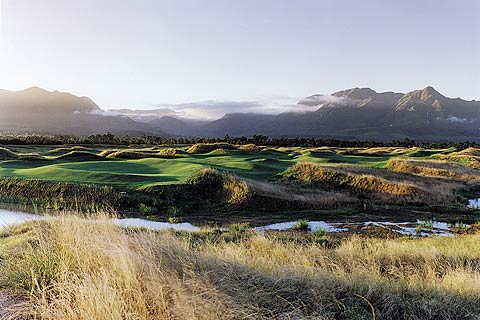 It all began quite innocently in 1956 with the televising of The Masters tournament held at Augusta National. Just one look at the pristine fairways and perfectly manicured rough and Americans across the country demanded the same attention to detail from their local municipals. This day marked the end of American dominance in the sport of golf. Recent history proves how dead American golf is. Look at the World Golf Rankings, 13 of the top 25 come from countries other than the United States. The European teams have held The Ryder Cup six of the past nine years. College golf teams are recruiting players from all over the world because of their abilities. Why the shift in power? It’s not due to a lack of effort: go to any course and you’ll see tons of youngsters trying to emulate Tiger woods. If fingers should point, then blame should lie squarely on American golf courses.
It all began quite innocently in 1956 with the televising of The Masters tournament held at Augusta National. Just one look at the pristine fairways and perfectly manicured rough and Americans across the country demanded the same attention to detail from their local municipals. This day marked the end of American dominance in the sport of golf. Recent history proves how dead American golf is. Look at the World Golf Rankings, 13 of the top 25 come from countries other than the United States. The European teams have held The Ryder Cup six of the past nine years. College golf teams are recruiting players from all over the world because of their abilities. Why the shift in power? It’s not due to a lack of effort: go to any course and you’ll see tons of youngsters trying to emulate Tiger woods. If fingers should point, then blame should lie squarely on American golf courses.
Anyone who has ever played non-resort courses around the world will acknowledge the vast differences compared to most courses in America. Without the big budgets, access to expensive earth-moving equipment, and famous architects, these courses strive to work with the existing land to create challenges and test golfer’s mettle. On the other hand, American courses frequently alter the landscape of the land by creating lakes, re-planting trees, and carefully mowing the rough. Being in the rough is supposed to penalize golfers, not reward them. Recently world number one Vijay Singh was quoted as saying driving accuracy is one of the most overrated stats on the PGA Tour. Try telling that to any player on the European Tour who has to deal with six-inch high rank bent grass bordering the fairway.

Are links style courses any better than well manicured American courses? No, but I doubt anyone will argue they present unique challenges not commonly found in well-manicured ones. I still remember my first time standing on the tee box of a links course and trembling at the site of foot-high fescue looming just off the fairway. Closer to the green there were bunkers shaped like open mouths ready to swallow a stray ball. Bunkers on European links courses will force a new respect upon the timid golfer. Furthermore, I never understood golf announcers over-use of the phrase, “imagination around the greens” until I realized just what it takes to get up-and-down around a links style course. The bump-and-run, flop, and lofted chip all can be used on a given hole. How does a player pick? Depends on the conditions.
A given hole on a true links course never plays to same way twice, and subtle changes in wind and weather can require stark changes in strategy and course management. This is where players from around the world are beginning to define themselves. Playing on these courses helps to hone skills greatly. After playing out of unmowed-rough and dealing with all kinds of hairy lies, American courses look like very easy tracks. A close friend of mine recently played The Old Course at St. Andrews (probably one of the first true links) and after the first hole said, “I’ve never had such difficulty trying to hit a 150 yard wide fairway.” All golfers can benefit and gain experience from playing different style courses; however, the uniformity of course design in America prevents that.
The bottom line is we have just become too accustomed to perfect conditions in America. Even I am guilty of standing on a tee box at a small town municipal course and cursing the grounds crew because my feet were not perfectly level. These days, it seems links style courses are seen as luxuries, vacations from the rutt of our “standard” manicured courses. Don’t get me wrong, I love my home golf course. I also adore the attention to detail and perfect grooming American courses have become known for. However, I think it’s time that we added a little spice to American course design. Let’s bring links style golf to more places than just Sea Island and expensive European vacations. For the good of the game, let’s keep some variety in American golf courses.
Photo Credits: © Getty Images
